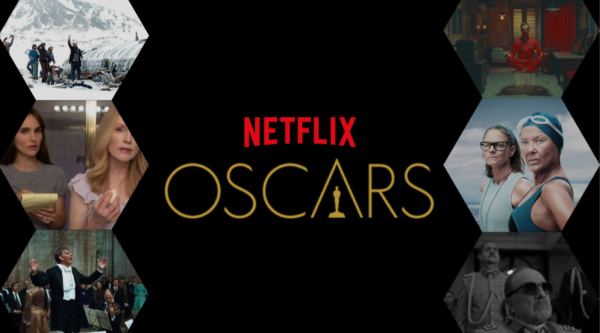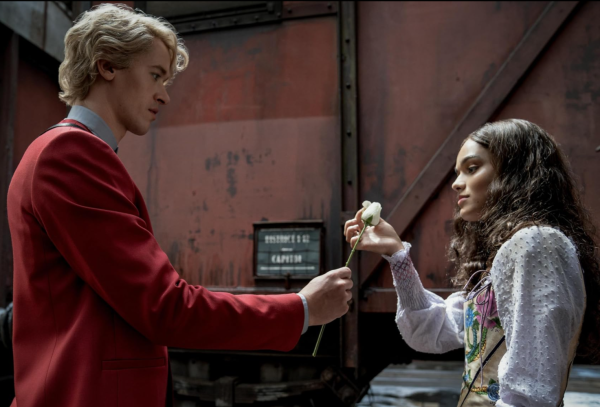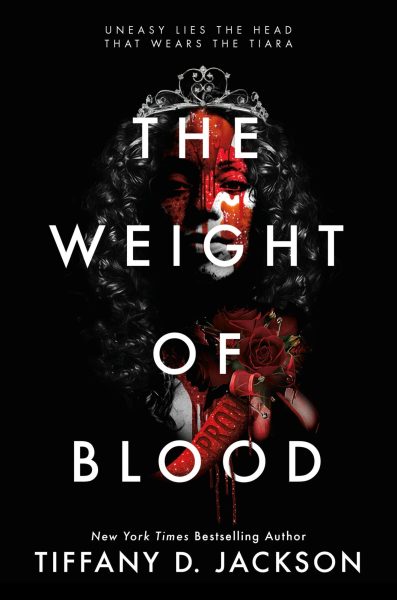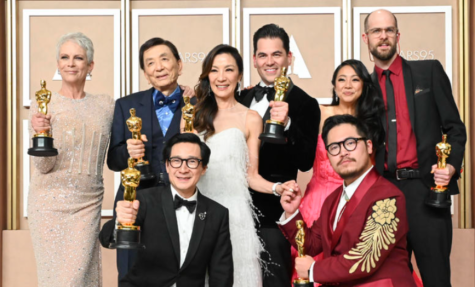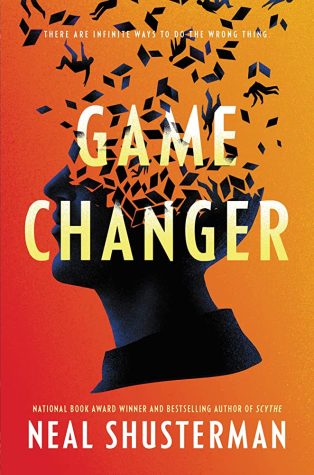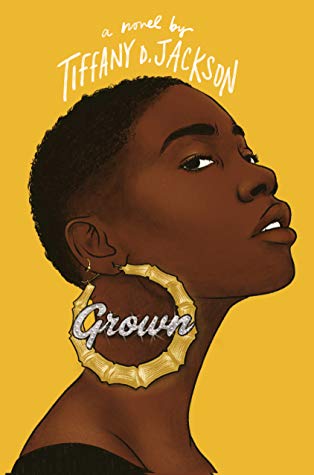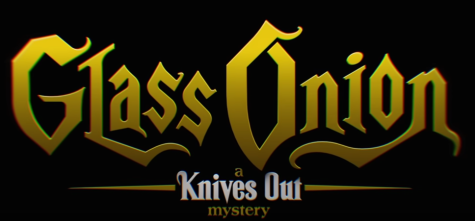Film Suffers from Source Material
a review of Mockingjay: Part 1
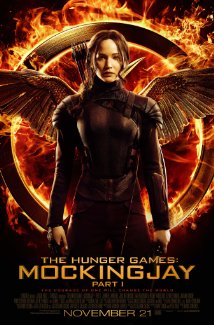
The Hunger Games: Mockingjay Part 1 follows the ever growing trend set by Harry Potter and the Deathly Hallows of splitting a single book into two movies, but does this newly allotted amount of time serve as a boon to increase quality or a detriment, inflicting the whole film?
Picking up after the cliffhanger ending of 2013’s Catching Fire, Mockingjay follows the adventures of protagonist Katniss Everdeen as she serves the role of figurehead for the revolution against the totalitarian Capital government.
As to expect from a high budget prolific film series with two films under its belt, Mockingjay boasts the same high production values as previous entries, though overall it feels slightly blander than before. The change of setting to the mysterious District 13 is the main cause of this. The costuming has switched from extravagantly overtop yet eye pleasing costumes of the Capital to a generic gray military suit that majority of the cast adorns. The setting has also shifted into the bunker of the rebel base which, while effectively leading to a feeling of claustrophobia I believe Director Francis Lawrence intended, rarely allows the audience to see the more interesting vistas offered in the Panem world.
There is also no significant increase in quality of direction from Lawrence. Not to say the direction is bad, far from it. However, whereas the transition from Hunger Games into Catching Fire lead to a multitude of more dynamic shots and near complete removal of the generally overdone and ineffectual tactic of shaky cam, the transition into Mockingjay offers no noteworthy leaps.
The returning cast from both Hunger Games and Catching Fire perform to the same level as in previous appearances. Lead actress Jennifer Lawrence’s interpretation of the Girl on Fire quickly proves itself to be far superior to the source material. In particular, Katniss’ emotional turmoil is far more eloquently expressed whereas in the novel it unintentionally came across more as unsympathetic and trite teenage wallowing.
Woody Harrelson’s Haymitch remains as wonderfully crude as ever but lacks the humorous dialogue or compelling mystery of previous entries, and Donald Sutherland’s antagonistic President Snow is shuffled off to the sidelines, though, when he finally shows up at the end he steals the show from everyone else. Philip Seymour Hoffman’s expanded role allows him to supply the cleverest jokes and overall the greatest amount of charisma. Unfortunately, these veterans are placed behind the younger cast members who serve as inadequate substitutes.
Liam Hemsworth as Gale unfortunately continues to feel like the standard third wheel in the franchise’s arbitrary and overall dull love triangle. He simply lacks the charisma to stand among the cast along with not really having much to do. Sam Claflin’s Finnick feels almost like a nonentity along with Josh Hutcherson’s role being reduced to essentially a glorified cameo.
Only two stars of significance join the fray: Julianne Moore and Mahershala Ali as President Coin and Boggs respectively. Moore steps up to the bat with her role as a possible ally or foe for Katniss. She adds a certain amount of sympathy while maintaining the sinister nature, creating an overall more dynamic and unpredictable version of her book counterpart. Conversely, while Ali maintains the authoritative stoicism of Boggs, the film simply removes all of the meat of the character in the source material leaving nothing more than another face to throw on the silver screen.
These preceding issues are certainly strange because the Mockingjay book being split into two films should have negated many of those problems. However, Mockingjay simply was a book that lacked the content needed to fill two movies. The pace is simply plodding, characters have discussions and events occur but, ultimately, nothing is achieved. Ironically, Mockingjay is an example of how staying too close to the original source material can be a detriment as the bland first half of the book is translated faithfully into a bland first half of a two part movie.
Mockingjay Part 1, ultimately, is a well-made filler episode in a so far decent young adult franchise. Despite its share of good performances, special effects, and even an occasional bit of spectacle, the film’s stagnant story results in a plodding and unfulfilling experience that satiates its audience rather than truly satisfies.



